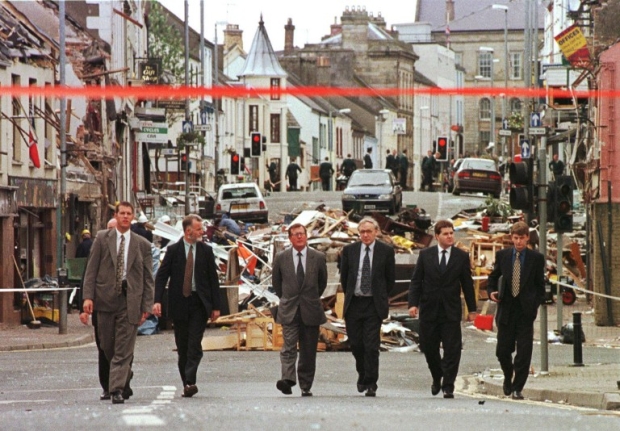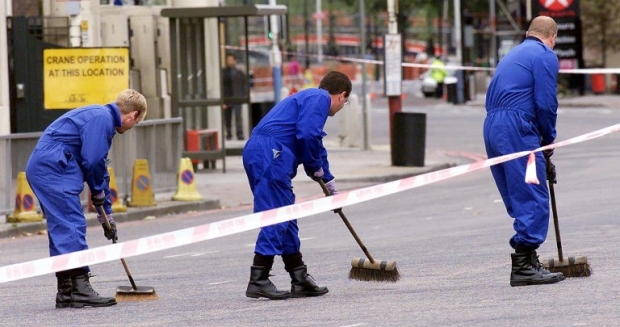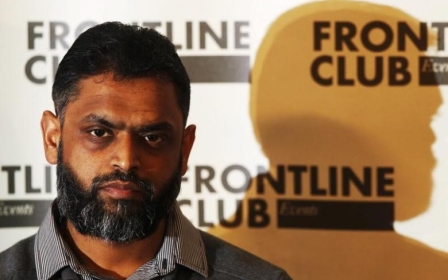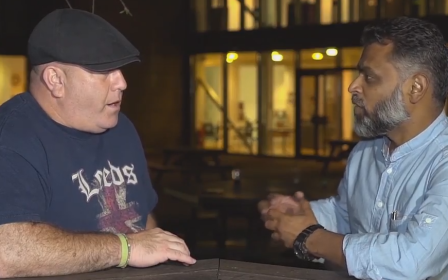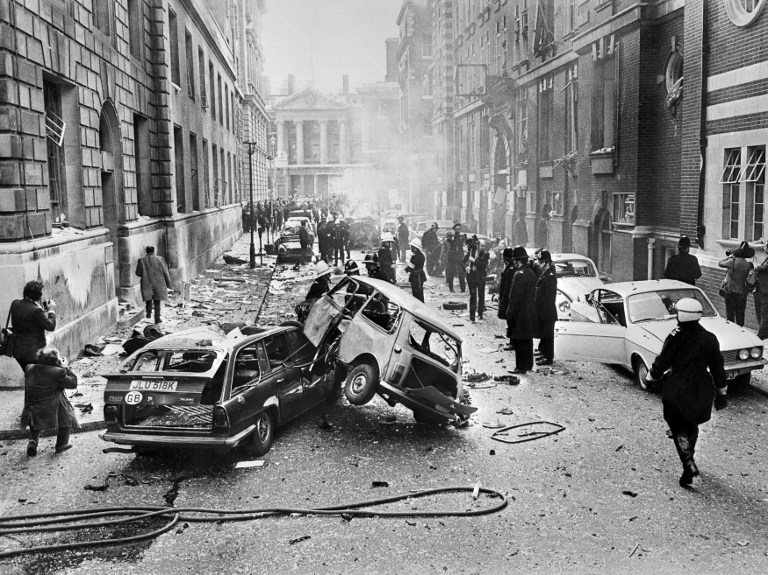
From IRA to Islamic State: The UK's age of 'unprecedented terror'
The constant reminders at train stations to look out for “anything suspicious” were already enough to keep most of us on edge and for Muslims in particular to discover ways to not look too suspiciously Muslim.
Late last month, the incoming independent reviewer on terrorism, Max Hill, told the media that “Islamic extremists were targeting UK cities”. Hill, a former prosecutor who’d helped convict the failed 21/7 bombers, added that the threat was “at least as great as the IRA threat to London 40 years ago”.
Britain today has more anti-terror powers than it had at the height of the Irish “Troubles”. That fact alone is particularly alarming, considering more than 3,000 people were killed in that conflict.
In fact, some of the most important lessons that should have been learnt from it were not. Rather, resultant state abuses became a template for torture techniques used in the current war on terror.
The Irish Troubles
British forces used the infamous “five techniques” that included hooding, prolonged stress positions, white noise, sleep deprivation and deprivation of food and drink against a group of prisoners dubbed “the Hooded Men”. IRA internees were also subjected to electric shocks and waterboarding by British security services. Terror suspects were subjected to simulated drowning in Britain long before the US endorsement and use of this mediaeval torture technique.
It took successive British governments over 40 years to issue an apology for Bloody Sunday - but no one was ever held to account
In 1972, after the previous year’s introduction of mass internment - imprisonment without trial - of Irish Republican prisoners, 25,000 people took to the streets of Derry to protest. They were greeted by trigger-happy British soldiers who shot 26 of them, killing 15. It took successive British governments more than 40 years to issue an apology - but no one was ever held to account.
Consequently, the IRA campaign and recruitment drive increased with unprecedented intensity.
The attacks included: 12 soldiers and their family members killed in a coach bomb; 28 killed in pub attacks that included Birmingham and Guildford; 11 killed in London’s royal parks; six killed in Harrods; Lord Mountbatten, the former and last viceroy of India, assassinated in a boat bomb; five people killed at the Brighton Conservative Party conference when prime minister Margaret Thatcher barely escaped with her life; several attacks conducted at military barracks and on individual soldiers; a mortar strike on 10 Downing St that aimed to kill prime minister John Major. Other attacks occurred in Warrington; Manchester’s Arndale Shopping Centre; Bishopsgate, London; London’s Docklands, and Omagh, Northern Ireland.
In 2000, the RIRA fired a rocket that hit the MI6 headquarters, while in 2001 they bombed the BBC’s London head office.
Peace, of course, only came after Britain negotiated with the “terrorists” and the IRA negotiated with the “occupier”. One of the conditions of the Good Friday Agreement of April 1998 was the release of all political prisoners - meaning those convicted of terrorism. The British government complied.
In return, the IRA’s campaign of political violence officially ended, although not everyone was happy with the result. Only last year, the security services claimed that the threat level from dissident Irish groups was “severe,” meaning there was a strong possibility of attacks. Terrorism industry experts rarely make reference to this threat and its causes.
The more the laws, the more the threat
Terror threats to Britain are always described by security services and politicians as “unprecedented”. This happened after 9/11, after the invasion of Afghanistan, after the invasion of Iraq, after the publications of anti-Muslim cartoons in Denmark, after drone killings in Pakistan, Yemen and Somalia and after the rise of the Islamic State (IS) group.
Now that IS is nearly defeated, the threat level has increased yet again. In fact, it is hard to recall a time in recent history when the threat hasn’t been so “unprecedented”. Little wonder we have “unprecedented” anti-terror measures.
Even before Brexit, Britain threatened to pull out of the European Court of Human Rights just to avoid legal redress for Abu Qatada
For almost 17 years, successive British governments, both Labour and Conservative, have doled out a new piece of anti-terror legislation almost every year. These laws allowed for:
- schedule 7 airport stops where British Asian Muslims are 42 times more likely to be stopped, searched, detained and questioned (despite comprising 4.5 percent of the UK population)
- extension of pre-charge detention in police custody to 28 days (the Labour government of Tony Blair sought three months - equivalent of apartheid in SA)
- imprisonment without charge or trial under emergency measures
- control orders (house arrest and internal exile) based upon secret evidence
- Terrorism Prevention and Investigation Measures (or 'Tpims' - control orders lite)
- criminalisation of poetry and literature
- terrorism asset freezing
- Justice and Security Act (where claims against government torture complicity would be heard in secret, following the decision in the British Guantanamo cases)
- the highly controversial Prevent duty.
The latest law, nicknamed "The Snoopers Charter," allows security services to access internet browsing records without a warrant.
In addition to these measures, Home Secretary Amber Rudd has exercised her "royal prerogative" powers to confiscate passports and citizenship from scores of mostly Muslim citizens. The government has signed memoranda of understanding with countries that are known to practice torture in order to deport suspects.
Even before Brexit, Britain has threatened to pull out of the European Court of Human Rights just to avoid legal redress for Abu Qatada (who had never been charged with a crime in the UK and was subsequently exonerated of all charges even after he opted to return to Jordan). Others have been extradited, deported, jailed or killed in targeted drone assassinations.
Thought police
Despite all of that, the terror threat is the greatest this country has ever faced. There must be a point at which this country stops and asks an extremely serious question: why has everything it has done to fight terrorism internally and externally for 17 years only made the threat worse than it's ever been?
Why has everything we’ve done to fight terrorism internally and externally for 17 years only made the threat worse than it's ever been?
Since the attacks in Paris, Brussels and Nice, it is clear that the fear and even likelihood of an attack on British soil is quite possible. The current threat level is severe, meaning an attack is highly likely. There is only one level above severe - "critical" – which means an attack is expected imminently. The threat level has been at severe since August 2014, shortly after IS declared its caliphate.
We understand that the police and security services play a vital role in seeking to protect the citizens of this country. Anyone who wants to live in a peaceful society can understand that. We understand too that they will make mistakes along the way and we appreciate the complexities of the task ahead of them. Learning from these mistakes is the part where our governments are wilfully failing.
Several senior police officers, for example, have warned about the dangers of the government’s counter-terror strategy that goes far beyond tackling any severe or imminent threat.
Greater Manchester Police chief Sir Peter Fahy warned in 2014 that Britain could “drift towards a police state” and that our officers are turned into “thought police” in the fight to define and criminalise amorphous “extremism”. Prevent was described by former senior police officer Dal Babu as a “toxic brand” even before it was made law.
Last year, the government even sought to define the meaning of extremism through legislation but was warned again, this time by the police chief heading Prevent, Simon Cole, that the government was risking making his officers into “thought police”. UN official Maina Kiai said recently that instead of stopping it, Prevent could “end up promoting extremism”.
Blindsided: Far-right threat
Overemphasis on the Muslim community, anti-Muslim rhetoric and laws that de facto are applied only to Muslims have fomented the rise of hitherto latent far-right extremism and blindsided the government.
There is not much of an appetite to apply the terrorism label against anyone but Muslims today
Last week, news presenter John Humphrys sparked outrage on BBC Radio 4’s Today when he declared that MP Jo Cox’s killer, local white man Thomas Mair, was a “mentally ill” murderer whose case “muddies the water when we talk about that case as terrorism”. He was corrected by Mark Rowley, the UK’s head of anti-terror police, who said: "That's not my classification, it was the view of the court and the sentencing."
Statistics, in fact, show one in three terrorism suspects arrested last year were white. Arrests of far-right extremists have doubled in 2016, increasing after the killing of Jo Cox. Although Ukrainian neo-Nazi, Pavlo Lapshyn, who bombed three mosques and murdered pensioner Mohammed Saleem was charged under terror laws, the police and the government did not treat him as they would if the terrorist were a Muslim.
It is clear from previous trials of far-right criminals that there is not much of an appetite to apply the terrorism label against anyone but Muslims today. John Humphrys was only mouthing what tabloids and politicians have been saying in Britain and the US for years.
Terror threat from Muslims
UK authorities say they’ve foiled 13 attacks in less than four years. Britain's most senior police officer, Mark Rowley, said most of these attacks involved one or two people but others were “not that dissimilar” to Paris and Brussels. Although we can surmise most were IS-inspired, my experiences both in and out of prison tell me we have not learned to reduce the terror threat by studying motives.
IS grew out of the torture chambers of Abu Ghraib and Camp Bucca
In 2014, I spent seven months imprisoned in London's Belmarsh Prison as a Category A prisoner accused of terrorism. In prison I met many Muslim prisoners who had pleaded guilty to either preparing or carrying out acts of terror. And by that, I don’t mean those who wrote poetry, published books, read things on the internet, took paramilitary training or even fought in Syria. I’m talking about those who tried to kill people in the UK.
Many of the ones I spoke to regretted their actions but explained that they were motivated by the British occupation of Iraq and Afghanistan. One of them, whose bombing spree thankfully went wrong, had several members of his family killed by coalition forces. Another, who was caught planning a knife attack, was clearly disturbed and knew almost nothing about Islam but said that he was “sick of seeing Muslims being killed”.
It is common knowledge that the way in which the war on terror against al-Qaeda and the Taliban was conducted resulted in both entities growing in influence and global reach even as the US declared “mission accomplished”. IS grew out of the torture chambers of Abu Ghraib and Camp Bucca; 17 of its 25 original leaders had been imprisoned by the US.
Before leaving office, US president Barack Obama admitted that IS grew from “unintended consequences” of the Iraq invasion. Britain was a big part of that.
The question for us should be: abusing the Irish gave us decades of terrorism, so what did the government and security forces expect the abuse of Muslims to produce? Solutions to the terrorism scourge are easy. They’ve been on our doorstep all along.
- Moazzam Begg is a former Guantanamo Bay prisoner and research director for UK-based campaigning organisation CAGE.
The views expressed in this article belong to the author and do not necessarily reflect the editorial policy of Middle East Eye.
This article was edited on 18 March to correct a reference to an attack on 10 Downing Street.
Photo: View near Whitehall after an IRA car bomb exploded on 8 March 1973 in London. In protest against the referendum on Northern Ireland, IRA planted four car bombs. Two of them were defused but the other two exploded, one outside the Old Bailey and the other in the Whitehall near Scotland Yard. One person was killed and about 200 people were injured (AFP)
Middle East Eye propose une couverture et une analyse indépendantes et incomparables du Moyen-Orient, de l’Afrique du Nord et d’autres régions du monde. Pour en savoir plus sur la reprise de ce contenu et les frais qui s’appliquent, veuillez remplir ce formulaire [en anglais]. Pour en savoir plus sur MEE, cliquez ici [en anglais].


